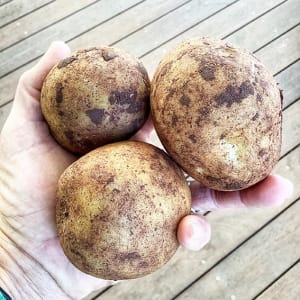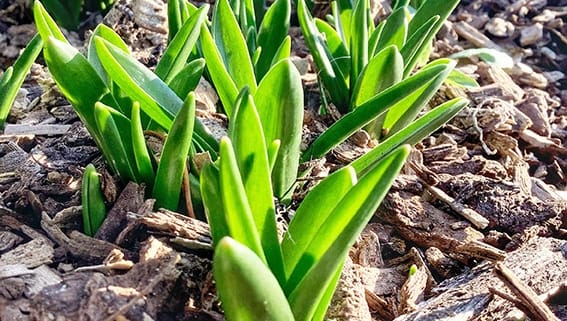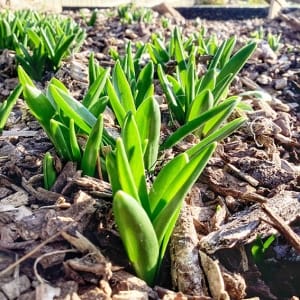Bare-rooting season
For thousands of years humans have cultivated shrubs and trees, and dug and distributed them as bare-rooted young plants, often wrapped in damp rags or bound in a damp ball of sawdust. For growers, this is the most economical way to produce and distribute plants, and for buyers it means we get a bigger, better plant for less money. August is the perfect time to plant bare-rooted roses, fruit trees and ornamentals, because with spring around the corner they will be shooting up in no time.
August is also a great time to pore over the seed catalogues and to start preparing for your warm weather garden by topping up your mulch, compost and manure to help stop the soil drying out later. It’s also a good time for some maintenance on your irrigation system, which after our dry July you have no doubt already been using!
August is also your last chance to spray your peaches, nectarines and apricots to prevent ‘peach leaf curl’. It’s caused by the fungus Taphrina deformans and, if not controlled, it can seriously weaken the trees. It can usually be controlled satisfactorily with a spray of a suitable registered fungicide but the timing of the spraying is critical – it needs to be done before any buds begin to open. Anytime thereafter is a waste and could even prevent the fruit setting.
 Another essential gardening chore for August is to chit your spuds. Chitting is the practice of encouraging potatoes to sprout strong, stubby green shoots prior to planting, which gives your tubers a head start. Place your potatoes, or even pieces thereof, into an egg carton or two on a sunny windowsill, plant them out towards the end of the month into rich soil, and mulch over.
Another essential gardening chore for August is to chit your spuds. Chitting is the practice of encouraging potatoes to sprout strong, stubby green shoots prior to planting, which gives your tubers a head start. Place your potatoes, or even pieces thereof, into an egg carton or two on a sunny windowsill, plant them out towards the end of the month into rich soil, and mulch over.
Another way to get a head start on the growing season and improve your seed germination is to warm up your seedling soil artificially. One way is to use an electric seedling heat mat placed underneath the seedling tray. Or you can make a solar-powered version, commonly known as a ‘cold frame’ – essentially a glass-topped box that traps heat and humidity. You can construct a cold frame easily from an old window sitting atop a box made of timber or bricks. Cover the glass during the night to keep as much heat in as you can, and prop the glass lid slightly open as the daily temperatures begin to warm to avoid burning your seedlings.
Finally, this month in the vegie garden we continue catering to the cooler weather, so we’re mostly still limited to planting leeks, shallots or onions, peas of any description, and broad beans and lettuce. Rocket and silverbeet are probably also worth trying this month, as are one of the fastest-growing vegetables, the humble radish. It only takes them twenty-three days to grow from a tiny seed to a full-grown, ready-to-eat root!
If you have any comments, gardening questions, or plant or pest identification problems, please send them through to gardening@thetriangle.org.au and we will get back to you personally.
Happy growing.



